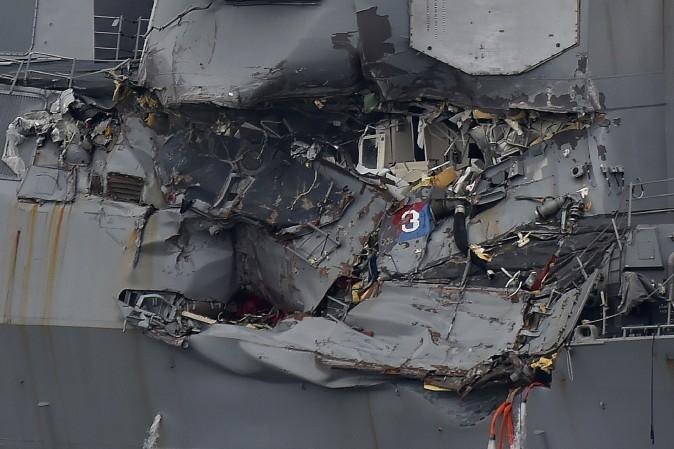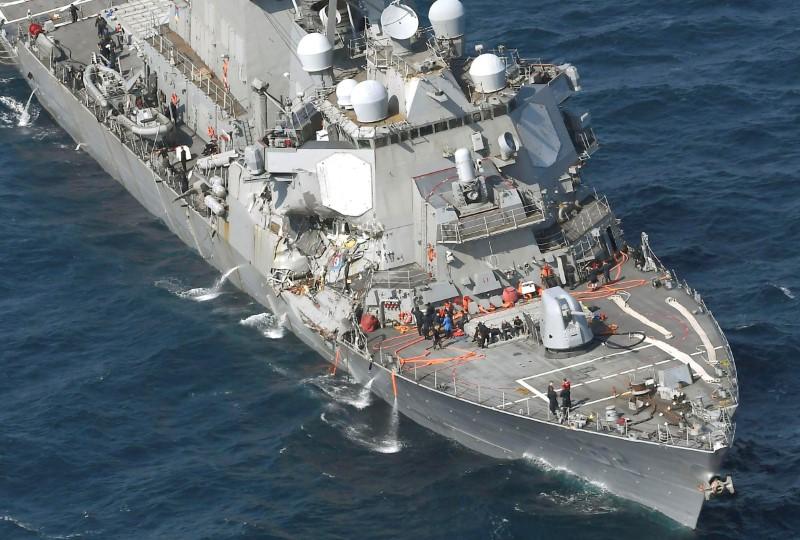The U.S. Navy destroyer, USS Fitzgerald, maintained its collision course despite light signals from Philippine container ship ACX Crystal, leading to a crash of the two vessels, according to a report by the cargo ship’s captain reviewed by Reuters.
The crash killed seven U.S. sailors in clear weather south of Tokyo Bay at 1:30 a.m. on June 17.
The sailors were in their berthing compartments and their commander was injured in his cabin, suggesting no alarm was sounded.

Damage to the guided missile destroyer USS Fitzgerald is seen as the vessel is berthed at its mother port in Yokosuka, southwest of Tokyo, on June 18, 2017. Kazuhiro Nogi/AFP/Getty Images





